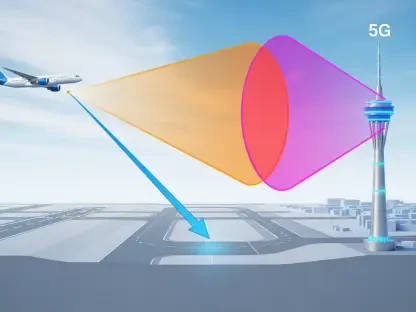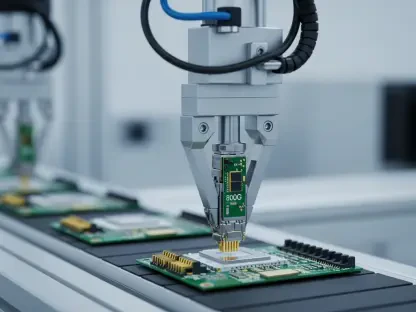Enterprise connectivity is undergoing a significant transformation as 5G technology and Edge AI converge to redefine the framework through which businesses operate. With the rapid development of 5G networks, coupled with the advancement of artificial intelligence at the edge, companies are embracing a new era of connectivity that promises to revolutionize the way data is processed and accessed. This shift is not just about faster internet speeds or more powerful processors; it symbolizes a deeper integration of cutting-edge technologies that offer unparalleled opportunities for efficiency and innovation. The partnership between industry giants Ericsson and Supermicro embodies this evolution, with their collaborative efforts focused on simplifying procurement, enhancing deployment, and fostering an ecosystem where AI and connectivity are seamlessly intertwined. In an era where low-latency, reliable, and intelligent systems are critical for maintaining competitiveness, the marriage of 5G and Edge AI is poised to become a cornerstone for numerous sectors, including retail, manufacturing, healthcare, and beyond.
The Collaborative Edge
Ericsson and Supermicro have embarked on a groundbreaking partnership that seeks to accelerate enterprise connectivity through their combined technological prowess. By integrating Ericsson’s 5G Enterprise Wireless Solutions with Supermicro’s Edge AI platforms, they aim to deliver advanced capabilities in commercial bundles that emphasize the inherent benefits of 5G connectivity. This collaboration is driven by the need to simplify procurement and deployment processes, providing businesses with a unified solution featuring pre-validated AI compute alongside 5G capabilities. As AI begins to permeate various business functions, the demand for low-latency Edge AI solutions is steadily growing, necessitating a transformation in how data is processed at the network edge, far removed from conventional data centers. The collaboration between these two technology leaders is anticipated to enable rapid deployment of Edge AI infrastructure, providing industries such as retail and manufacturing the tools to enhance operations through AI-driven insights and local data processing.
Their integrated approach addresses a burgeoning need among enterprises for alternatives to wired connections, offering wireless solutions that match the data throughput capability of traditional wired technologies. This is especially viable in sectors where wired connections are impractical, presenting opportunities for wireless advancements to foster innovative applications. The strategic fusion of Ericsson’s wireless WAN portfolio with Supermicro’s hardware is intended to empower enterprises by extending WAN edge connectivity into the burgeoning realm of Edge AI, enabling accessible and efficient integration of intelligence at the edge. Industries can leverage these developments to streamline operations, whether it is enhancing checkout processing in retail through real-time recognition or optimizing manufacturing through advanced automation enabled by localized data processing.
Industry Applications and Benefits
Supermicro’s expanding portfolio of devices varies from compact fanless models to larger rackmount systems tailored to diverse environmental demands. These systems are designed to enhance operations across several industries by accommodating the complex needs of each sector. Wireless solutions provided through Supermicro’s architecture present a viable alternative in scenarios where a wired connection is not feasible, helping industries improve various operations significantly. For instance, in retail environments, the technology can advance checkout processing with capabilities such as real-time customer recognition and inventory management, optimizing efficiency in customer engagement and store operations. In the manufacturing landscape, it offers opportunities for enhanced automation by enabling precise data processing within local facilities, improving production schedules, reducing downtime, and enhancing overall productivity.
Healthcare and traffic management are sectors poised to benefit from these innovations, where systems can be utilized to deliver improved process safety and efficiency. In healthcare, this could mean streamlined patient monitoring and diagnosis, leveraging the processing power of Edge AI to ensure timely treatment and care. Traffic systems can similarly harness these technologies to improve flow and reduce congestion, informed by real-time data analysis that adapts quickly to changing conditions on the roads. This versatility underscores the potential of the Ericsson and Supermicro partnership in driving an era of advanced, responsive, and integrated business solutions across multiple industries.
Paving the Path Forward
Enterprise connectivity is experiencing a sweeping transformation as the convergence of 5G technology and Edge AI redefines how businesses function. The advent of 5G networks, along with advancements in AI at the edge, is ushering in a new connectivity era. This transformation promises a revolution in data processing and access, going beyond mere enhancements in speed and processing power. It’s about the seamless integration of cutting-edge technologies, offering unmatched potential for efficiency and innovation. Ericsson and Supermicro exemplify this transition, focusing on simplifying procurement, streamlining deployment, and cultivating an ecosystem where AI and connectivity are seamlessly woven together. As low-latency, reliable, and intelligent systems become crucial for maintaining competitive edges, the union of 5G and Edge AI is set to be fundamental across sectors like retail, manufacturing, healthcare, and more. This strategic partnership not only underlines the evolving landscape but also sets a foundation for future growth and innovation.









